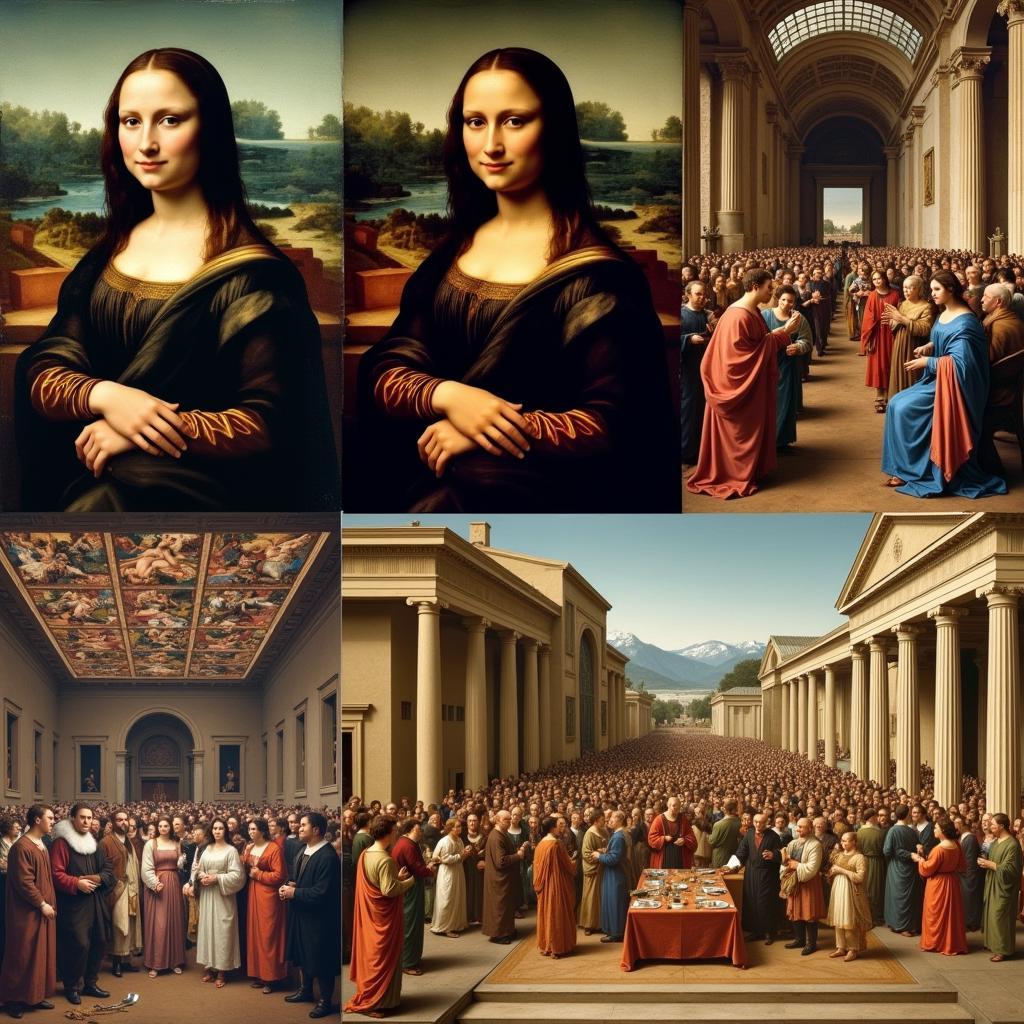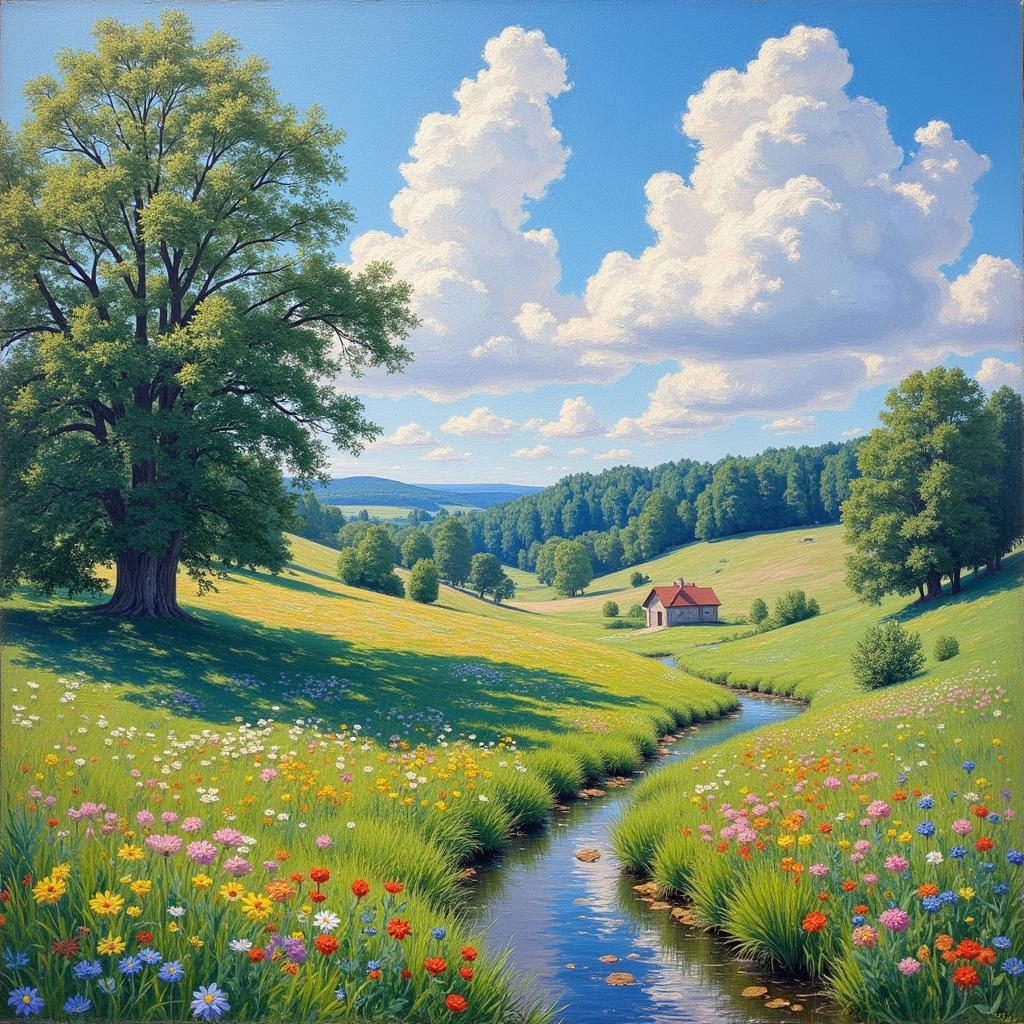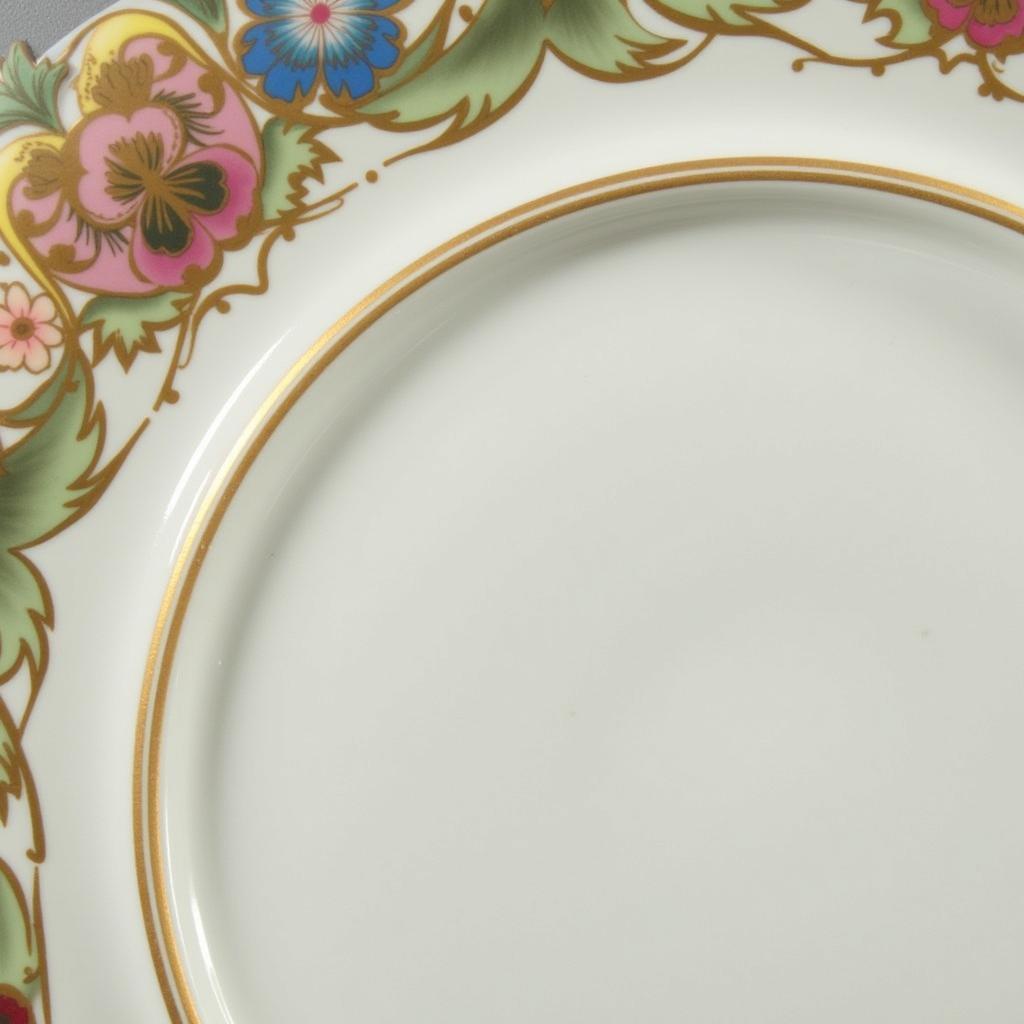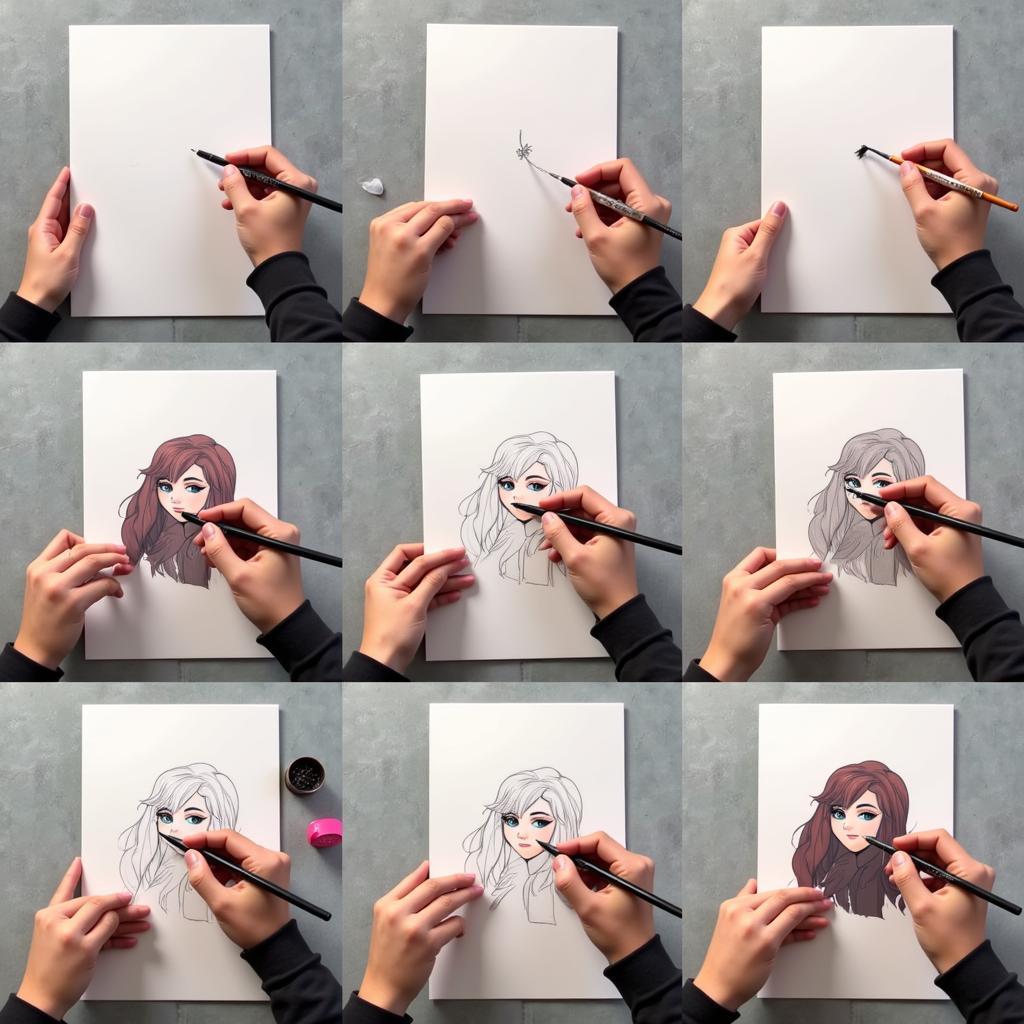Exploring the Rich Tapestry of Western Art
Western art, a vibrant and evolving narrative spanning centuries, encapsulates a vast spectrum of artistic movements, styles, and philosophies. From the cave paintings of prehistoric times to the digital art of today, this rich tradition offers a captivating journey through human creativity and cultural expression. This exploration delves into the key aspects, historical developments, and enduring influence of Western art.
The Classical Foundations of Western Art
Ancient Greece and Rome laid the groundwork for much of what we consider “Western art” today. Greek art, with its emphasis on idealized forms and harmonious proportions, gave birth to iconic sculptures like the Venus de Milo and the Parthenon’s magnificent friezes. Roman art, while influenced by Greek aesthetics, developed its own distinctive character, focusing on realism, grandeur, and narrative storytelling. Roman architectural marvels like the Colosseum and the Pantheon stand as testaments to their engineering prowess and artistic vision. These classical traditions established fundamental principles of aesthetics, proportion, and artistic representation that would continue to influence Western art for centuries to come.
What makes Classical art so influential? Simply put, it established the artistic vocabulary of the Western world.
The Renaissance: A Rebirth of Artistic Innovation
Following the Middle Ages, the Renaissance marked a period of renewed interest in classical art and learning. This era witnessed a flourishing of artistic innovation, with masters like Leonardo da Vinci, Michelangelo, and Raphael pushing the boundaries of painting, sculpture, and architecture. Da Vinci’s Mona Lisa, Michelangelo’s Sistine Chapel ceiling, and Raphael’s School of Athens are just a few examples of the artistic masterpieces that emerged during this transformative period. Perspective, anatomy, and the use of light and shadow were explored with unprecedented skill, creating a sense of realism and emotional depth that revolutionized Western art.
 Renaissance Art Masterpieces: Da Vinci, Michelangelo, and Raphael
Renaissance Art Masterpieces: Da Vinci, Michelangelo, and Raphael
The Renaissance wasn’t just a revival; it was a reinvention, setting the stage for the Baroque period and beyond.
Baroque and Rococo: Drama and Opulence
The Baroque period, characterized by drama, dynamism, and elaborate ornamentation, saw artists like Caravaggio and Rembrandt use dramatic lighting and intense emotions to capture the human experience. Rococo, a lighter, more decorative style, emerged in the 18th century, emphasizing elegance, asymmetry, and pastel colors. Artists like Fragonard and Watteau captured the frivolous atmosphere of the French aristocracy in their paintings, depicting scenes of courtship, leisure, and pastoral beauty. These contrasting styles, while distinct, reflect the evolving social and cultural landscapes of their time.
How did Baroque and Rococo differ? Baroque emphasized drama and intensity, while Rococo embraced lightheartedness and ornamentation.
Impressionism and Beyond: Capturing the Fleeting Moment
The 19th century saw the rise of Impressionism, a revolutionary movement that challenged traditional artistic conventions. Artists like Monet, Renoir, and Degas sought to capture the fleeting impressions of light and color, often painting en plein air (outdoors). Their brushstrokes became looser and more visible, creating a sense of vibrancy and immediacy that was unlike anything seen before. Post-Impressionism, building on the foundations of Impressionism, explored a wider range of artistic styles and expressions, with artists like Van Gogh, Cézanne, and Seurat developing their own unique approaches to color, form, and composition.
 Impressionist Landscape by Monet: Capturing Light and Color
Impressionist Landscape by Monet: Capturing Light and Color
What was the key innovation of Impressionism? The focus shifted from realistic representation to capturing the subjective experience of light and color.
Western Art in the 20th Century and Beyond: A Burst of Innovation
The 20th century witnessed an explosion of artistic experimentation, with movements like Cubism, Surrealism, Abstract Expressionism, and Pop Art challenging the very definition of art. Artists like Picasso, Dalí, Pollock, and Warhol pushed the boundaries of traditional art forms, exploring new ways of representing the world and expressing individual perspectives. From the fragmented forms of Cubism to the dreamlike imagery of Surrealism, the 20th century marked a period of unprecedented artistic innovation.
How did 20th-century art break with tradition? It embraced abstraction, challenged conventional perspectives, and explored new mediums and artistic expressions.
Western Art Today: A Digital Renaissance
Today, Western art continues to evolve, embracing new technologies and digital mediums. Digital art, virtual reality, and interactive installations are pushing the boundaries of artistic expression, creating immersive experiences that blur the lines between art and technology. The accessibility of digital tools has democratized art creation, allowing artists from all backgrounds to share their visions with the world.
What is the future of Western art? It’s a vibrant tapestry of traditional and digital mediums, constantly evolving and pushing the boundaries of creative expression.
Conclusion
Western art, a rich and complex tradition, continues to inspire and challenge us. From the classical foundations to the digital innovations of today, this ongoing journey of artistic exploration provides a window into human creativity, cultural evolution, and the enduring power of artistic expression. Exploring Western art is an enriching experience, offering a deeper understanding of ourselves and the world around us.
FAQ
- What are the main periods of Western art? The main periods include Classical, Medieval, Renaissance, Baroque, Rococo, Neoclassicism, Romanticism, Impressionism, Post-Impressionism, and Modern/Contemporary.
- Who are some of the most famous Western artists? Some notable artists include Leonardo da Vinci, Michelangelo, Raphael, Rembrandt, Monet, Van Gogh, Picasso, and Warhol.
- What is the difference between Impressionism and Post-Impressionism? Impressionism focused on capturing light and color, while Post-Impressionism explored a broader range of styles and personal expressions.
- How has technology influenced Western art? Technology has led to new art forms like digital art and virtual reality, expanding the possibilities of artistic expression.
- Where can I learn more about Western art? Museums, art books, online resources, and art history courses are excellent resources for learning more.
- What is the significance of Western art history? Studying Western art history provides insights into cultural, social, and historical contexts, fostering a deeper appreciation for art’s impact on society.
- How can I start appreciating Western art? Begin by exploring different art periods and artists, visiting museums, and engaging with art through reading and discussions.
Need further assistance? Contact us! Phone: 02462573573, Email: [email protected]. Visit us at Savico Megamall, 7-9 Đ. Nguyễn Văn Linh, Gia Thụy, Long Biên, Hà Nội 10000, Việt Nam. Our customer service team is available 24/7.



